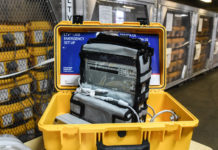NEW DELHI — It is the biggest election in history.
Across India, from the Himalayan mountains to the Andaman Islands in the Bay of Bengal, the first wave of millions of citizens will start a five-week-long vote on Thursday to choose a new Parliament, which will select a prime minister.
India is the world’s largest democracy, the most populous nation after China, and a pivotal geopolitical power. And it has never before held an election of this magnitude: 900 million eligible voters; at least 11 million poll workers; 2.3 million electronic voting machines; 2,000 political parties; and special trains, boats, helicopters and even elephants to transport voting equipment.
The race is a referendum on Narendra Modi, the powerful prime minister who is up for re-election. One of the most polarizing figures India has produced in decades, Mr. Modi has championed an assertive brand of Hindu nationalist politics that strives to elevate India’s Hindu identity but has sharply divided this country.
Many Indians appreciate his intensity, which he constantly demonstrates in huge rallies where hundreds of thousands of people gather under the hot sun to hear him thunder about being India’s watchman — his new campaign slogan — and how he is the best candidate to preside over this dizzyingly diverse nation of 1.3 billion.
Many Indians believe that the Modi administration has been more effective, less corrupt and better at positioning India on the world stage than past governments.
But his right-leaning political party, the Bharatiya Janata Party, also has alienated minorities and created fear. Intellectuals blame the Hindu nationalist atmosphere stoked by Mr. Modi and his party for a rash of lynchings and other violence against Muslims and lower caste Indians.
The latest surveys predict that Mr. Modi, 68, will return to power. But voter discontent over India’s economic challenges, especially rising joblessness, is likely to reduce the number of parliamentary seats his party controls. That could hamper his ability to push the Hindu nationalist agenda further.
In the last election, in 2014, Mr. Modi’s party stunned the country by winning an outright majority in the lower house of Parliament, which has 543 elected seats. By picking up even more seats through alliances with smaller parties, he then built a political juggernaut that went on to dominate Indian politics.
But this time around, few expect such a tidal wave. Though Mr. Modi remains popular among many in the middle class and across northern India’s Hindu heartland, more poor Indians are turning against him.
Farmers in many states have organized protests, furious that Mr. Modi has not delivered on promises to strengthen crop prices. In urban areas, anti-Modi feelings are building as well. Rising inflation and unemployment have become liabilities for him.
India’s economy is still growing at a fast rate, around 7 percent a year. Technology companies are popping up across the landscape; passenger jets are almost always packed; and more Indian students are attending the world’s best universities. India now is the sixth-largest economy, powered by its sheer scale.
But many gains have been captured by a tiny elite. Poverty lurks in every corner of this country, from the busiest intersections of New Delhi, the capital, to the sharecropper cotton farms across India’s bushy center.
This leaves the leading opposition party, the center-left Indian National Congress, an opportunity to capture more seats than in the last election, which it lost badly. But most polling data suggests the Congress party will be a distant second to Mr. Modi’s, with slim prospects of forming the next government.
The biggest criticism of the Congress party, which won India freedom from Britain and ruled for most of India’s independent history, is that it has failed to articulate a clear vision. The party historically has championed minority rights. Its socialist policies have helped improve education and empower lower castes.
But as Mr. Modi’s party has pulled India rightward, the Congress party has struggled to respond.
Rasheed Kidwai, author of several books on the Congress party, said it lacked “that kind of hunger for power that the B.J.P. has.”
The party also cannot shake its reputation as a family dynasty, embodied by its leader, Rahul Gandhi.
Mr. Gandhi’s father was prime minister. So were his grandmother and great-grandfather.
But Mr. Gandhi, 48, has never displayed his ancestors’ zest for politics. He is known as affable, mild-mannered, even a little shy, and if this race were purely a choice between him and Mr. Modi, opinion polls show he would be trounced.
But Indian politics are not personality pageants. The race for prime minister is actually 543 different parliamentary races, often driven by complex local issues and contested by a galaxy of parties that fight along geographic, religious and caste lines. Bribes are rampant; the election commission has already seized billions of rupees and millions of liters of liquor.
The election results will not be clear for a while, since the voting is conducted through mid-May. Different places vote on different dates, and the electronic machines — and the poll workers — will move from site to site.
Only after the last votes have been cast will the election commission reveal the results, expected on May 23.
Source : Nytimes












